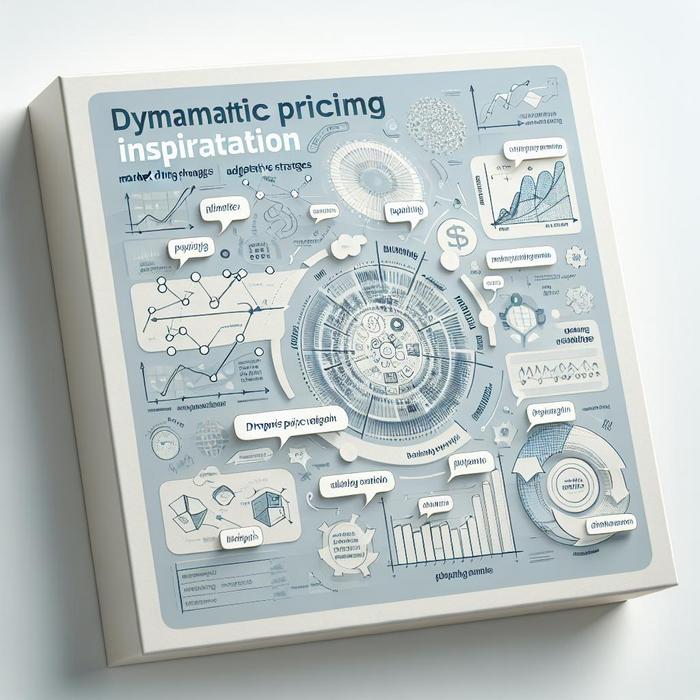How can dynamic pricing drive market changes?
Confronted with the fast-paced evolution of the business landscape, how proactive is your marketing strategy? Have you considered the game-changing advantages of a dynamic pricing model? Dynamic pricing has transformed the way businesses operate by offering a flexible approach to adjusting prices based on market circumstances. But what is its role in responding to market changes, and how does it relate to value-based marketing?
Dynamic Pricing and Value-Based Optimization: The Synergy
Incorporating a dynamic pricing strategy within the framework of value-based marketing can optimize marketing ROI. It enables businesses to adjust prices according to customer value perceptions, market demand, and competitor strategies — factors that are constantly changing. Simply put, it’s the act of marrying price to value, where value is an ever-evolving entity.
Dynamic pricing, when used as part of value-based strategies, enhances a company’s ability to adapt to market changes and improves overall marketing operations’ effectiveness. Moreover, it helps in deriving better insights into customer behavior, allowing businesses to implement more effective marketing tactics.
Adaptive Strategies for Dynamic Market Changes
Adaptive strategies in dynamic pricing can be the difference between thriving or lagging. Unlike traditional pricing models, dynamic pricing provides a mechanism to respond in real-time to fluctuating market conditions. It gives businesses the agility to tweak their pricing strategies quickly and optimize value delivery.
A successful adaptive strategy involves systematically monitoring market data, customer preferences, and competitor behavior. Utilize advanced analytics to understand real-time trends and make informed pricing decisions. Consider data-driven dynamic pricing, which brings science and precision to the art of pricing.
Finding the Balance: Pricing and Value
While it’s critical to keep pace with market changes, businesses must also focus on balancing dynamic pricing with value perception. Remember, high prices do not always equate to high perceived value. Leveraging value-based marketing principles can guide businesses in setting prices that resonate with customers’ perceived value.
The key lies in communication. A robust value-based marketing plan helps businesses communicate the value behind their pricing strategy, strengthening the bond with their customers. Connecting with audiences through value-based communication ensures that the dynamic pricing strategy aligns with customer expectations, leading to customer satisfaction and enhanced brand loyalty.
Adapting to the New Normal with Dynamic Pricing
Adopting dynamic pricing is no longer a choice but a necessity. It’s a powerful tool that allows businesses to respond quickly to market changes, ultimately bolstering their bottom line. By integrating it with value-based marketing principles, businesses can ensure they deliver the best value to their customers, enhancing customer satisfaction and loyalty in the process.
By understanding and implementing dynamic pricing strategies within the framework of value-based marketing, businesses can optimize their marketing ROI, ensuring they stay ahead.
Establishing the Foundation for Successful Dynamic Pricing
A pivotal step in implementing a dynamic pricing strategy lies in strengthening the foundation with insights. To effectively harness the potential of dynamic pricing for higher ROI, businesses need to dig deeper into customer value perceptions and competitive landscapes. Businesses must focus on quantifying intangible aspects like customer preferences, needs, and expectations to identify price points that resonate with value perception.
robust and comprehensive understanding of the competitive environment is equally important. Understanding the competitor’s pricing tactics and studying their impact helps to keep pace with dynamic market changes, ensuring competitiveness. Market-driven dynamic pricing helps businesses to stay ahead by adjusting prices adeptly, keeping profitability in focus.
Aim for Hyper-Personalization with Dynamic Pricing
The future of dynamic pricing lies in personalization. Businesses now have the capability to delve deeper into customer data, enabling a one-to-one personalized pricing strategy. Most businesses have realized that a one-size-fits-all pricing strategy is no longer relevant. Now, the magic lies in segmentation and creating personalized pricing for various customer segments based on their behavior, expectations, and preferences.
Value-based marketing recognizes this need and successfully aligns it with the dynamic pricing strategy. By understanding the unique customer considerations, businesses can derive schemes that evoke a sense of value, resonate with recognizing individual needs and preferences, and ultimately lead to higher customer satisfaction levels. Maximizing customer satisfaction with personalized pricing strategies foster brand loyalty and enhances the overall customer experience.
Measure, Learn, Adapt: Towards An Agile Dynamic Pricing Strategy
Value-based marketing is not a one-time initiative but a continuous process of learning and adapting. As the market scenario changes and customer preferences evolve, businesses need to remain proactive. Implementing a dynamic pricing strategy calls for the constant measurement, evaluation, and adjustment of marketing tactics based on real-time insights.
Businesses can leverage digital technologies and analytics to derive insights about customer behavior, price elasticity, and buying patterns. Such factual, evidence-based pricing decisions ensure that the strategy is not just responsive but also predictive, identifying and capitalizing on future trends and patterns.
Cultivating Customer Trust through Value-based Dynamic Pricing
Trust is a cornerstone in the customer-business relationship. Businesses must ensure that dynamic pricing does not cause a trust deficit with customers. Communication comes into play here, where businesses need to go beyond merely informing customers about price changes. They need to articulate why the prices are changing and how it aligns with delivering better value to customers.
Emphasizing value-based marketing principles helps businesses build stronger customer relationships through trust and transparency. Innovative marketing models can be used to ensure that the dynamic pricing strategy is not viewed as a mode of maximizing profits but rather a means to deliver optimal value. In conclusion, value-based dynamic pricing is a powerful strategy for businesses to stay agile and proactive.
Leverage Value-Based Dynamic Pricing for Superior ROI
The adoption of value-based dynamic pricing is emergent, leading to remarkable enhancements in marketing ROI. By understanding, implementing, and iterating the pricing strategies based on real-time market insights and customer value perceptions, businesses can stay resilient and relevant to customer needs while maximizing profitability and market position. Cultivating competitive advantage through dynamic pricing backed with value-based marketing optimizes communication, earning customer trust and ensuring robust ROI.

